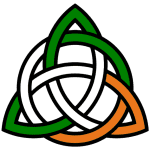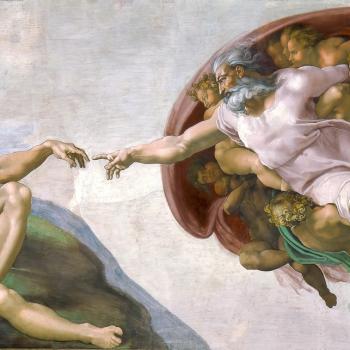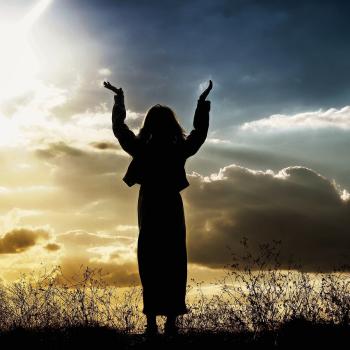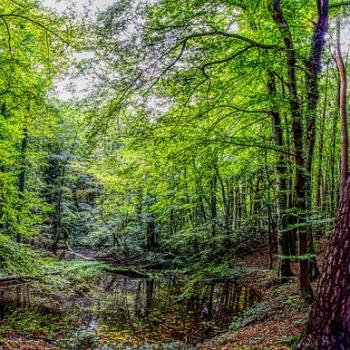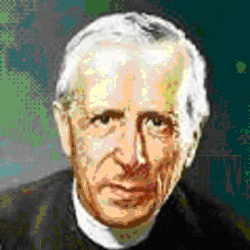This will be the first of three essays on the spirituality of the Celts.
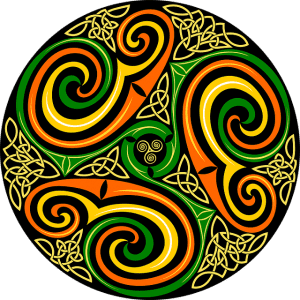
Around the time that Lao Tzu and Confucius were plying their trade in China; when Mahavira and the Buddha were teaching in India; when Zoroaster was preaching in Persia; and Jeremiah was the prophet to Israel, a tribe of people called the Milesians – better known as the Celts – was invading Ireland. They defeated the earlier inhabitants, the Tuatha Dé Danann (the People of the goddess Dana) and an agreement was reached whereby Ireland was divided between them in two equal parts: the Celts got Ireland above the ground and the Tuatha Dé Danann got Ireland beneath the ground! So the Tuatha Dé Danann shape-shifted and became the Slua Sidhe (the Faery Host).
(A) Some definitions and differentiations
This essay will give a brief account of the history of the Celts, but in order for you to fully understand the Celtic mind, I need to (re)define three key concepts. Firstly, imagination is not the ability to make up stuff which is not real (that ability is called fantasy) but, rather, the ability to shift one’s state of consciousness, enter into different dimensions, interact with the beings and energies that reside in those dimensions, learn from them, bring that learning back and cross-fertilize it with the learning of “ordinary” consciousness.
Secondly, I need to differentiate between knowledge and wisdom. Knowledge is information which is accessed via the senses and processed by the brain. It allows us to navigate in the ordinary state of consciousness in the physical world. Wisdom, on the other hand, is information which is accessed via the soul and processed by the heart. It allows us to navigate in all states of consciousness in both the metaphysical and physical (which is simply a printout or hardcopy of the online metaphysical program.)
Thirdly, I need to differentiate between fact and truth. A fact is merely a data point in the physical ordinary state of consciousness which corroborates a fabricated map or model of “reality.” Truth is very different. Something is true if it transforms me and aligns me with Source – whether or not it is factual! And something is ultimate truth if it transforms me radically and aligns me permanently with Source.
So, as an example, when Jesus told the parable of “the Good Samaritan”, the details of the story – the muggers who waylaid the traveler on the road from Jerusalem to Jericho, the uncaring priest and Levite, the compassionate foreigner/enemy, the hotel keeper – may all have been fictitious, but to those who understood the answer to the question which drew forth the parable, “Who, then, is my neighbor?” it was really transformative and, hence, true.
Similarly, something can be factual but not true e.g., as I write this sentence it is 3:34 p.m. on a Tuesday afternoon. I’d be shocked, however, if that fact leads you to sell all you possess and spend the rest of your life volunteering with Mother Teresa’s sisters on the streets of Calcutta.
(B) The Celtic Wisdom Keepers
Strangely, we know of these, initially, from the reports of Julius Caesar after his conquest of the Gaulish Celts, and his forays into Celtic Britain in 55 BCE. There were three orders of wisdom keepers among the Celts.
Firstly, the bards were the keepers of the past. A bard would either be a permanent member of a chieftain’s court, or a nomad who visited there for a time and then moved on. As keeper of the past, he was historian and genealogist. He was also poet, minstrel, storyteller and performing artist. He had to be able to produce three kinds of music – Suantraí (music that “soothes the savage breast” as well as lullabies); Goltraí (music that induces a profound nostalgia and leads to tears); and Geantraí (music that fills people with joy and makes them laugh from the soul to the eyes.)
And storytelling is not primarily about entertainment or information. It is about transformation. The great storyteller engages the imagination (as I have defined it) and leads the audience into a trans-temporal state (they are no longer locked into the “now”); into a trans-spatial state (they are no longer identified with the “here”); into a trans-rational state (which is not ir-rational but, rather, post-rational – beyond mere left-brain logic); and into a trans-personal state (they are no longer identified with a narrow sense of separate self.) So the bard made time travelers and mystics of his listeners.
The second order of wisdom keepers was the Ovates, who were the keepers of the wisdom of the future. They conducted the ceremonies that escorted people through the rites of passage – initiation into the different levels of the human life trajectory. They were the seers, the psychics, the shamans, the visionaries, and the prophets.
And the function of the prophet is not to predict the future but, rather, to prevent the future. The prophet (ovate) is the one who sees the present really clearly, unlike the rest of us who see what appears to be or what we are told to expect. Since he can see the present clearly, it is obvious to him where the graph is headed. And, due to the greed of the ego (both the individual ego and the much-more-deadly ego-of-the-oligarchy) the future regularly takes us down evolutionary cul-de-sacs. The prophet’s job is to prevent that from happening.
In ancient Israel, the prophet would call the Hebrew nation back into alignment with its covenant with its god Yahweh. For the ancient Celts, the ovate would call the Milesians back into alignment with their goddess Nature. More about that later.
The third order of wisdom keepers was the Druids. They were the intellectual giants of the Celtic world. They were the scientists and astronomers. And for the Celts, as for many ancient peoples like the Sumerians, Egyptians and Mayans, astronomy was based on the deep realization that the universe, as a whole, is an interrelated puzzle with all the parts being in significant relationships. All life is energized by this web and information exchange. The heavenly bodies are not merely dead rocks spinning in mind-less space, nor fiery nuclear furnaces burning themselves into ashes. They are intelligent partners in the cosmic dance, and humans had better learn the steps.
The druids were also the philosophers and psychologists delving into the meaning of the intra-psychic cosmos and its fractal representation of life’s ultimate purpose. As theologians and priests, they attempted to understand and dialogue with the goddesses and gods. As healers, they tried to restore and maintain balance among all these moving parts.
And, finally, they were the lawyers and judges, guiding the application of the Brehon Laws – a much older system than the English legal code and one which eschewed capital punishment in favor of the Eiric – a system of fines, often paid in cattle.
(C) The Three Realms
Like shamanism, the Celtic cosmology consisted of three parts: firstly, the heavenly realm inhabited by the gods and goddesses; secondly, the Earthly realm inhabited by humans and by flora and fauna; and, thirdly, the underworld inhabited by the ancestors and by the Faery Folk.
These three realms interacted regularly and the function of ritual was to facilitate that tria-log. The Celtic knot is an artistic reminder of that conversation. Roman Catholicism would eventually come up with its own version of this – a beautiful concept but its language was warlike and its boundaries too tightly drawn. Focusing only on baptized Catholics it was, firstly, the Church Triumphant (the souls in heaven); secondly, The Church Militant (souls still on Earth); and, thirdly, the Church Suffering (the souls in purgatory). This arrangement is called The Communion of Saints.
The Celtic version was far more “Christian!” I call it The Communion of All Sentient Beings. Each flower, rock, lake, wild boar, grove of trees, human, faery, god or ancestor was part of this great family. This, truly, was a vision worthy of a cosmic spirituality.
(D) Thin Places
In Gaelic the “Caol Áit” or Thin Place is a reminder that there are locations where the veil between the mystical and the mundane, between the sacred and the secular is diaphanous. These were entry points into other dimensions. The Song of Amergin – the earliest known Irish poem, dating to about 600 BCE – is a waltz through such places, using the “I Am” phrase as a portal to bathe in the numinosity of the images. Unlike the famous “I Am Who I Am” phrase of Yahweh in Exodus 3:14, in which the distant demanding deity warns Moses to not approach, Amergin is inviting the listener to see and interact with all the manifestations of God.
So these portals were not merely confined to physical locations; imagination (as I have defined it) was a powerful Caol Áit; so, also, were music and storytelling. Indeed there were people whom I would describe as mobile tabernacles of transcendence, whose very being conferred a numinosity on any encounter with them.
(E) Liminality
Limina, in Latin, means a threshold, and the idea of liminality, for the Celts, was very closely related to the idea of Thin Places. It had to do with the idea of sacred time. There were four great feast days in the Celtic calendar: Imbolc (February 1st.), Bealtaine (May 1st.), Lughnasa (August 1st.) and Samhain (November 1st.) The year revolved around the Samhain-Bealtaine axis, and it began with the darkness. For the Celts, darkness was not the villain who gobbled up the light, rather it was the sacred womb out of which light and all of creation was birthed. Like Buddha’s insight that “form is emptiness and emptiness is form”, the Celts saw darkness as the feminine aspect of God. Light and dark are lovers, not enemies.
The same was true of the day, which began not with sunrise but with sunset. Once again it was dusk/dark/mother who gave birth to dawn/light/child.
So, for the Celts, dusk and dawn are time-thin places.
(F) Nature
The single most important teaching of Celtic spirituality is respect for Nature. Unlike “radah” of Genesis 1:26 which is constantly misinterpreted in the West as God giving humans the right to subdue nature, the Celts saw humans and nature as partners in a divinely-choreographed dance. Hence the goddesses are the archetypes of nature while the gods are the archetypes of culture. Culture and nature are passionate lovers not bitter rivals. And, as I said earlier, the mission of the ovate/prophet was to continually call culture back into alignment with nature.
So important was this partnership that once the High King of Ireland had been selected by the Liath Fáil (the Stone of Destiny) he underwent a marriage ceremony where he (as the representative of culture) exchanged wedding vows with the goddess (as the representative of nature). If he proved faithful to his vows the land would prosper; if he proved unfaithful, famine and war were assured.
This, then, was the vibrant, mystical, nature-aligned spirituality that Christianity would later encounter.
I will treat of that meeting in the next of these three essays.
Slán go fóill. (Be well until then.)


